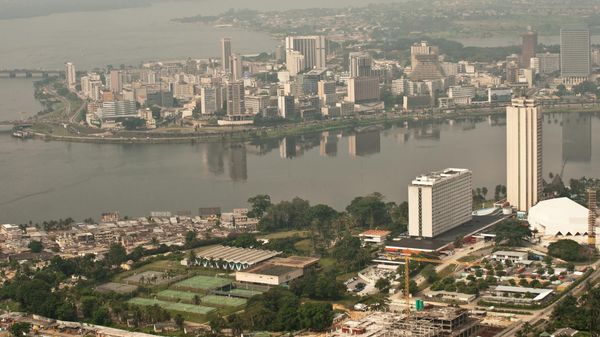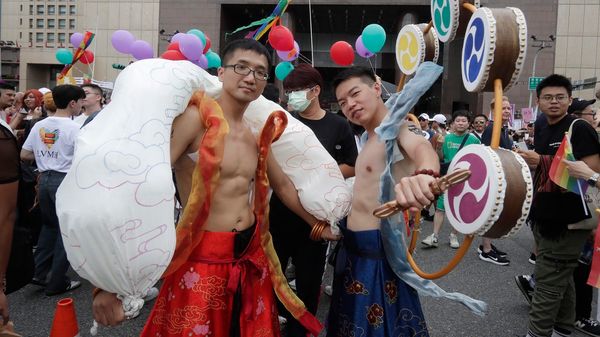
January 7, 2018
B.A.R. Archives Go Digital
Matthew S. Bajko READ TIME: 6 MIN.
For years researchers, students, historians, and the curious interested in reading old copies of the Bay Area Reporter, at least those printed prior to August of 2005, had two options. They could either scroll through microfiche versions of the paper at the San Francisco Main Public Library, or they could make an appointment with the GLBT Historical Society's archivist to read through its collection of past B.A.R. issues.
As of the New Year there is now a third option, as copies of the country's oldest continually publishing LGBT newspaper have been digitized and added to two online collections for periodicals. Now anyone on the globe with an internet connection can access the historic record of the Bay Area's LGBT community without leaving their home.
"For the first time, readers from all over the world will be able to conveniently access the nearly 50-year archive of the B.A.R.," said B.A.R. publisher Michael Yamashita, a longtime staff member who last month bought out two minority owners of the paper to return it to being a fully gay-owned publication. "It's fascinating to browse through the years and appreciate what the LGBTQ community has achieved in San Francisco."
The paper's old articles, reviews, and other content joins the digitized collection of its obituaries, which was completed several years ago by the GLBT Historical Society and is accessible via its website.
"The completion of digitizing the B.A.R.'s archives is a milestone," said longtime news editor Cynthia Laird. "I regularly receive calls from researchers, students, and others wanting to access old issues of the paper and have had to refer them to the hard copies at the historical society or the microfiche ones at the library. That may work for people who are local, but was not practical for those outside the Bay Area. Now, they will have immediate access."
Digitized versions of the B.A.R. starting with the August, 5, 2005 issue, have been available for years via the newspaper's archive section on its own website at http://ebar.com/archives/. A search tool allows those interested to select a date and pull up all of the stories that ran in that issue of the paper, which is published weekly on Thursdays, or they have the option of searching through the entire archive using specific keywords or dates.
Working backward from the July 28, 2005 issue of the B.A.R., Bill Levay, a project archivist with the GLBT Historical Society, has been assisting volunteers in scanning and creating PDF versions of the papers in the organization's archives. They have completed all of the issues dating back to January 5, 1995 and expect to finish the work by the end of this year so that every issue since the B.A.R. launched on April 1, 1971 is accessible online.
"There is still a way to go," said Levay as he demonstrated how the scanning process worked a few days prior to New Year's Eve. "There are 1,500-plus issues to scan."
Levay, a straight ally who spends 10 hours a week working on the project, oversees a rotating team of volunteers who have been helping with the digitization project. As they complete the work, Levay sends copies of the digitized B.A.R. issues to the two websites that will host them.
The first is the Internet Archive, based in San Francisco, whose B.A.R. archival collection can be accessed online at https://archive.org/details/bayareareporter&tab=collection. It is sortable by date and can also be searched using keywords.
The other online repository is housed on the California Digital Newspaper Collection website, which is overseen by UC Riverside. On the main page of the site - https://cdnc.ucr.edu/cgi-bin/cdnc - type "Bay Area Reporter" into the search prompt to pull up the archived issues. The digital collection can then be sorted by date as well as searched using keywords.
With the older papers now accessible online, stories from each issue should begin showing up in Google searches and other internet search engines, said Levay, who has a master's degree in library and information science from the Pratt Institute in New York and works full time for the California Historical Society.
Not only do searches of the digital archives bring up past B.A.R. stories, they will also result in some advertisements that include the searched words being listed among the results, noted Levay. The archival material, he said, should provide a wealth of information to academics, historians, and others with LGBT-related projects.
"The end goal is this amazing resource we are going to build. I am sure clever people will figure out some great projects to do with this material," said Levay.
The Bob Ross Foundation, named after the B.A.R.'s founding publisher, who died in 2003, donated $50,000 to the historical society in 2016 to purchase the state-of-the-art equipment needed to digitize the newspapers. Using an HP Bookeye 4 scanner, each page of the old newspapers is scanned, usually taking 10 minutes to complete one entire issue.
Previews of the scanned pages are then checked on both the computer screen attached to the scanner and on a desktop computer connected to it.
"It is only taking pictures of the paper. Software processes the images and pulls out the text," explained Levay, who runs the optical character recognition program at night and on weekends.
He will then visually check the digital versions of the paper before saving them to several external hard drives so there are backup copies. Levay then ships them off to the online archival sites to be uploaded to the web.
The Internet Archive is better for reading through online versions of the newspaper, said Levay, while the site for California newspapers has a better search mode.
GLBT Historical Society Executive Director Terry Beswick, who was a freelance reporter for the B.A.R. in the mid-1990s and joined the staff as a full-time news reporter in 1999 and 2000, has used the digital archives to search for his old stories he penned.
He cringed when re-reading one story he filed about why stripes honoring those lost to AIDS had been added to the rainbow flag at Harvey Milk Plaza in the Castro. Nonetheless, he printed it out and hung the article on his office door.
"There is so much content there. I was an inexperienced reporter covering a wide variety of issues that really were not being covered elsewhere," recalled Beswick.
Searching through the archived papers brings up long-forgotten coverage about the early days of the AIDS epidemic and the various work undertaken by the LGBT community, noted Beswick.
"This history has really only been accessible on this top shelf here in our archives or at the library's archives," said Beswick.
He hopes the material inspires not just historians but also authors, biographers, filmmakers, and artists to create new works.
"There is a lot of inspiration to behold there," said Beswick. "It is a literal treasure trove of information we have up there going back all the way to 1971."
He said he has given some current and former LGBT political leaders a "heads up" that past coverage of them in the B.A.R. can now be easily rediscovered.
"There will be some bodies unburied," joked Beswick.
Former B.A.R. publisher Thomas E. Horn, who is president of the Bob Ross Foundation, which has a minority ownership stake in the newspaper, said the digital archival collection will be "an indispensable tool" for telling the LGBT community's story.
"I consider the launching of an online, searchable archive of every edition of the Bay Area Reporter to be a tremendous step toward giving scholars and the public alike access to the first draft of the history of our movement," said Horn. "People will see what the issues of the time were; the personalities who shaped our movement; what was happening politically, socially and culturally. They will even see how gay people met, socialized, sought housing, and found lovers, and how advertisers reached out to our community. It is the history of our movement."
Levay is constantly looking for volunteers to assist with scanning the old B.A.R. issues. He created a step-by-step guide for how to do the work, which will continue with other periodicals in the GLBT Historical Society's holdings once the B.A.R. digitization effort concludes.
"I think we can do it within the next year, assuming we get good, committed volunteers to help us," said Levay. "That is really the key."
Anyone interested in helping out should email Levay at [email protected]







